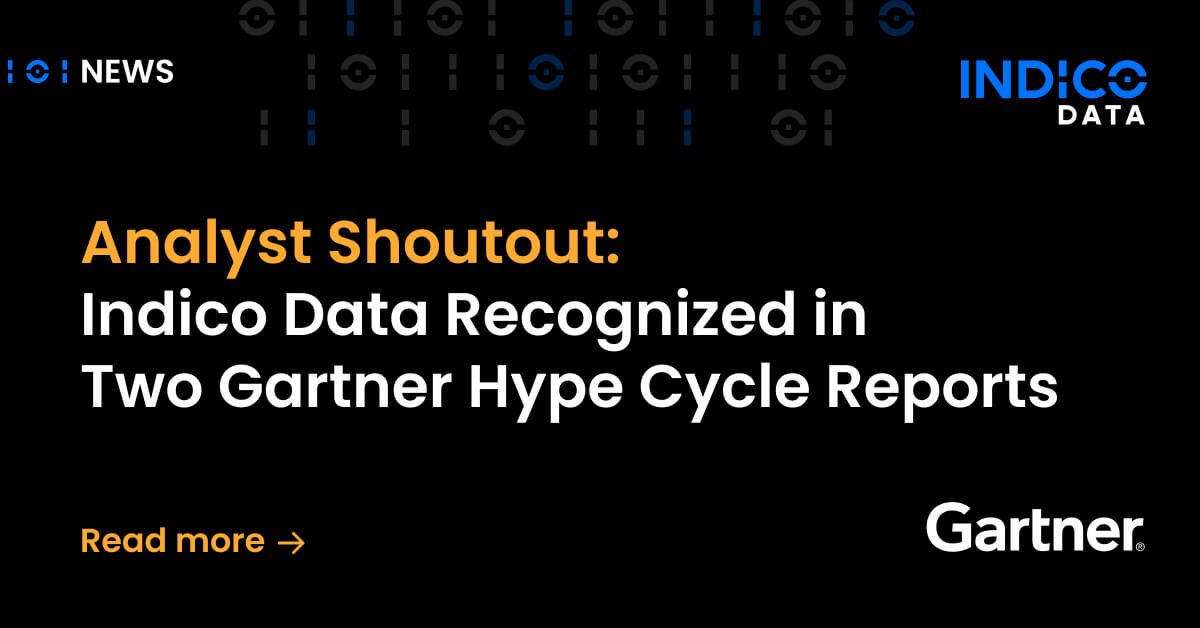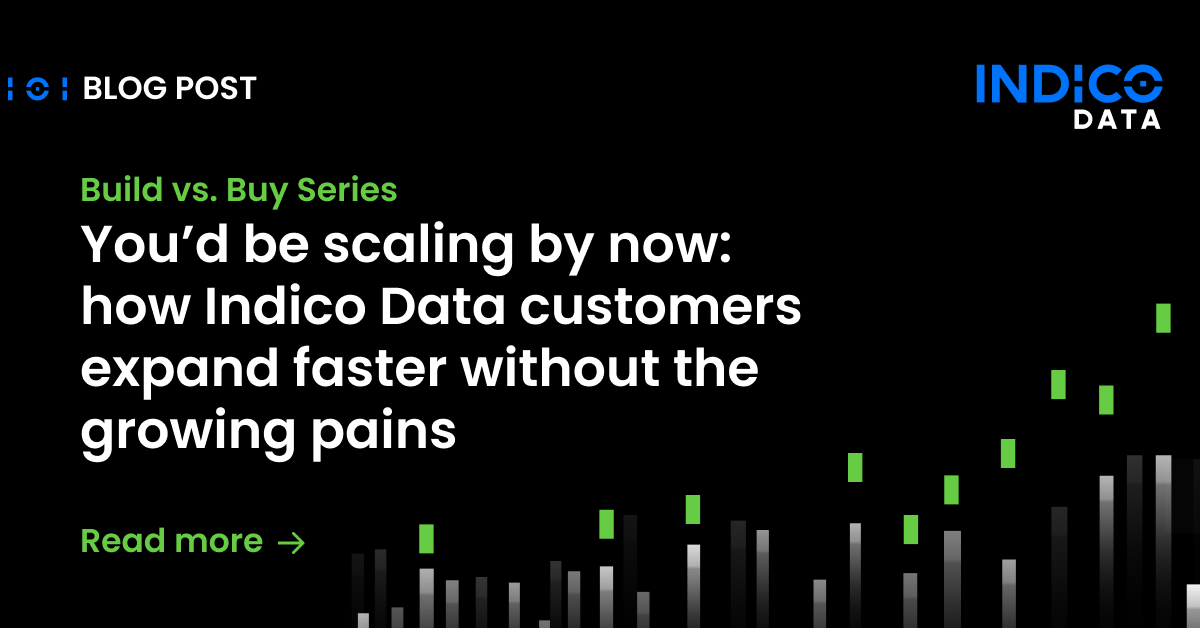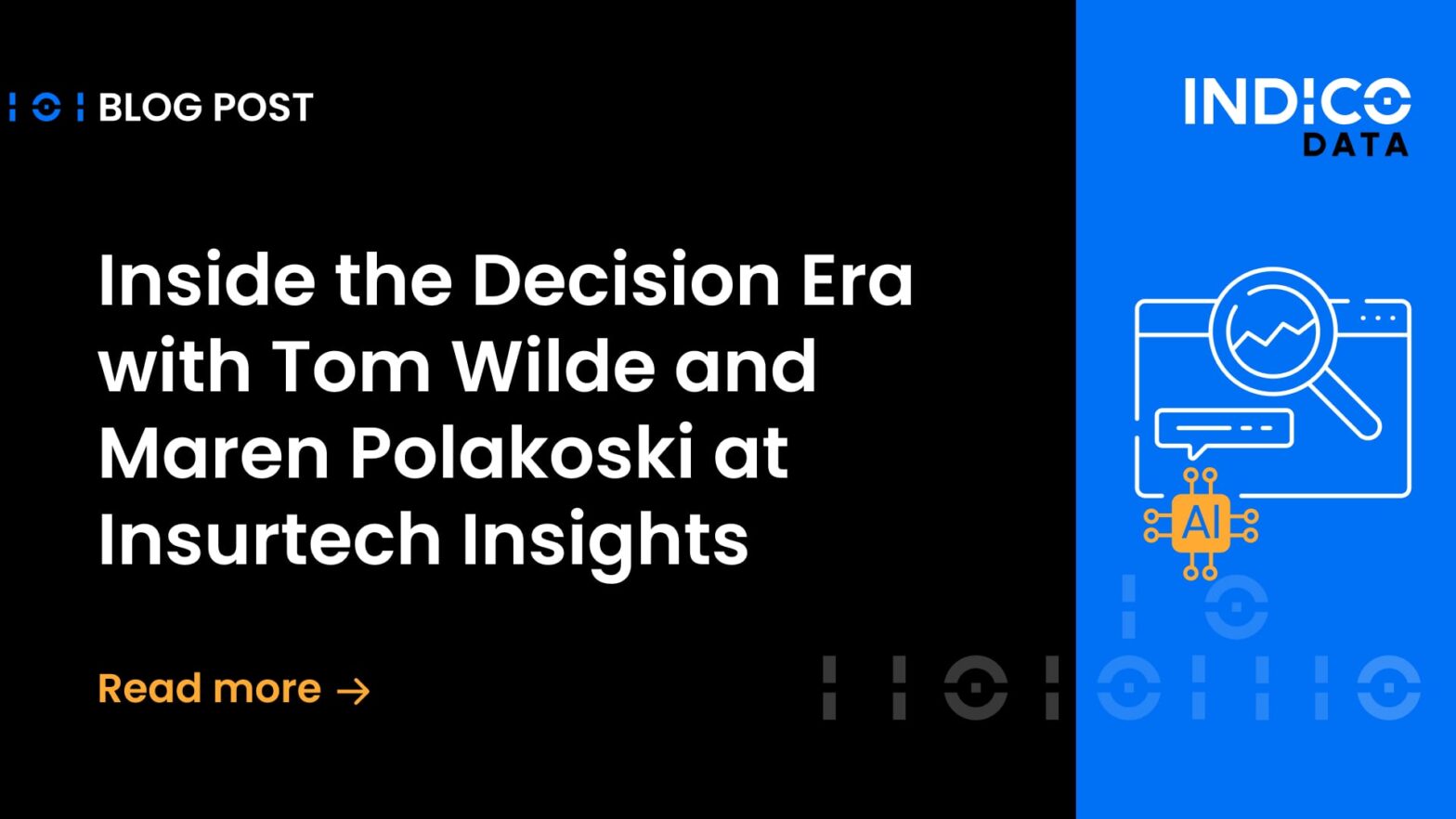The dynamic nature of technology continues to reshape Intelligent Document Processing, driving efficiency, accuracy, and strategic decision-making. In this article, we explore the emerging trends, future advancements, and expert insights shaping the evolution of IDP, highlighting the key document processing innovations that will define the industry.
The evolution of Intelligent Document Processing
IDP has come a long way from its inception. Initially designed to automate simple data extraction tasks, IDP now integrates advanced technologies like artificial intelligence (AI), machine learning (ML), and natural language processing (NLP) to handle complex document intake workflows. This evolution has made IDP an indispensable tool for businesses aiming to streamline operations and enhance productivity, illustrating the rapid growth and future of Intelligent Document Processing.
Key IDP trends
Understanding the future of Intelligent Document Processing involves examining key IDP trends that are shaping the industry. These trends highlight the document processing innovations driving advancements in efficiency and effectiveness.
AI and machine learning integration
AI and ML are at the forefront of IDP trends, enabling systems to learn from data patterns and improve over time. These technologies enhance the accuracy and efficiency of document processing by automating tasks such as data extraction, classification, and validation. According to Brandi Corbello, SVP of Global Delivery at Indico Data, the insurance industry’s need to effectively use its vast data repositories to aid decision-making and reduce exposure to risk is paramount. She sees these data resources as untouched gold, ready to be mined.
Natural Language Processing (NLP)
NLP is a significant part of IDP trends, enabling systems to understand and interpret human language. This technology processes unstructured data from various document types, which is crucial for industries like healthcare and legal. As IDP systems continue to evolve, we can expect more sophisticated NLP capabilities to further enhance data extraction and analysis, demonstrating the future of Intelligent Document Processing.
Blockchain for document security and verification
Blockchain technology represents a major document processing innovation, poised to revolutionize document processing by providing secure, immutable records of transactions. This ensures data integrity and transparency, making it ideal for industries that require stringent compliance and security measures. The adoption of blockchain in IDP will likely increase as businesses seek more robust ways to manage and verify their documents, influencing the future of Intelligent Document Processing.
User experience and accessibility improvements
Enhancing user experience and accessibility is a critical aspect of IDP trends. Future IDP solutions will focus on developing more intuitive interfaces and interaction designs that cater to users with varying technical expertise. By prioritizing user-centric design, IDP software can become more adaptable and easier to integrate into existing workflows, driving broader adoption across industries and showcasing document processing innovations.
Integration with Robotic Process Automation (RPA)
The integration of IDP with RPA is set to transform business processes by automating end-to-end workflows. This combination allows businesses to automate repetitive tasks, reduce human error, and improve overall efficiency. Leveraging RPA alongside IDP, companies can streamline operations and focus on higher-value activities, reflecting the future of Intelligent Document Processing.
Predictive analytics and proactive document management
Predictive analytics is a major component of IDP trends. By analyzing historical data and identifying trends, IDP systems provide valuable insights that inform decision-making and improve business outcomes. Proactive document management enables organizations to anticipate needs, automate decision-making processes, and optimize their document workflows for maximum efficiency, representing a significant document processing innovation.
Expert insights on the future of IDP
To gain a deeper understanding of the future of Intelligent Document Processing and the IDP trends shaping the industry, we spoke with several industry experts who shared their predictions and insights. Their perspectives provide valuable context for how IDP is expected to evolve and the document processing innovations we can anticipate.
Strategic importance of automation in insurance
One of the foremost insights comes from Tom Wilde, CEO of Indico Data, who emphasizes the strategic importance of automation in the insurance market. He believes that embracing automation is not just about keeping pace with technology—it’s about strategically utilizing these tools to secure a competitive edge in the insurance market. This insight underscores the role of automation as a critical element in the future of Intelligent Document Processing. Wilde also highlights the shift from data collection to decision-making, stating, “In the decision economy, leveraging vast amounts of data through automation isn’t just an option; it’s a strategic necessity for insurance firms.”
Increasing connectivity in small commercial markets
James Wright of Beazley Digital predicts increased connectivity in small commercial markets, a significant trend in the future of Intelligent Document Processing. He believes that small commercial markets will see increasing connectivity between brokers and clients, leading to quicker product innovations and adaptations as time goes on. This connectivity facilitates more efficient document processing and data sharing, further enhancing the capabilities of IDP systems and showcasing key document processing innovations.
Leveraging data for decision-making
Brandi Corbello, SVP of Global Delivery at Indico Data, highlights the potential of leveraging data for decision-making in the insurance industry. She argues that the insurance industry’s need to effectively use its vast data repositories to aid decision-making and reduce exposure to risk is paramount. These data resources are unmined gold, ready to be mined, in her view. This perspective emphasizes the strategic value of data in driving the future of Intelligent Document Processing and IDP trends.
Judicious use of automation
Thomas Mandel of Cushman and Wakefield advises on the careful and intentional use of automation, a critical consideration in the evolution of IDP. According to Mandel, not every step of a company’s intake process needs to be automated. If only 70%, or even 50%, of the process gets automated, but it still increases productivity, then that’s a significant success. This insight underscores the importance of identifying processes that truly benefit from automation to achieve optimal results, illustrating a thoughtful approach to document processing innovations.
Related content: And that’s a wrap! Indico Data’s 2023 in review
Future advancements in IDP
Several key advancements will shape the future of Intelligent Document Processing, each contributing to the evolving landscape of document processing innovations. These advancements will not only enhance the capabilities of IDP systems but also redefine how businesses manage and process their documents.
Enhanced AI and ML capabilities
AI and ML technologies will continue to evolve, providing more sophisticated data analysis and pattern recognition capabilities. These advancements will enable IDP systems to handle increasingly complex document processing tasks with greater accuracy and efficiency. The integration of AI and ML is central to the future of Intelligent Document Processing, as these technologies will drive significant improvements in how documents are managed and processed.
Real-time data processing
The demand for real-time data processing is a significant driver of IDP trends. Future IDP systems will process and analyze documents instantaneously, which will be particularly valuable in industries like finance and healthcare where timely access to information is critical. This capability will ensure that businesses can respond to changes and make informed decisions quickly, showcasing key document processing innovations.
Predictive analytics
Predictive analytics will play a significant role in the future of Intelligent Document Processing. By analyzing historical data and identifying trends, IDP systems will provide valuable insights that inform decision-making and improve business outcomes. This proactive approach to document management will help organizations anticipate needs and optimize their workflows for maximum efficiency, representing a major advancement in document processing innovations.
Integration with other technologies
IDP systems will increasingly integrate with other technologies such as robotic process automation (RPA), customer relationship management (CRM) systems, and enterprise resource planning (ERP) platforms. This integration will create seamless workflows and enhance overall business efficiency. The future of Intelligent Document Processing will be characterized by the ability to combine multiple technologies to deliver comprehensive solutions, reflecting the evolving landscape of IDP trends.
Customization and flexibility
Future IDP solutions will offer greater customization and flexibility, allowing businesses to tailor the technology to their specific needs. This adaptability will make IDP accessible to a wider range of industries and applications, ensuring that businesses can implement document processing innovations that align with their unique requirements. Customizable IDP systems will drive broader adoption and demonstrate the versatility of Intelligent Document Processing.
Enhanced security measures
As data security becomes increasingly important, future IDP solutions will incorporate advanced security measures to protect sensitive information. This will include the use of blockchain technology, encryption, and robust access controls to ensure data integrity and compliance with regulatory standards. Enhanced security measures will be a critical component of document processing innovations, ensuring that businesses can trust their IDP systems to handle sensitive information securely.
The impact of IDP on various industries
The advancements in IDP will have far-reaching implications across multiple industries, highlighting the transformative power of the future of Intelligent Document Processing and IDP trends. These innovations will redefine how businesses operate, offering new opportunities for efficiency, accuracy, and strategic decision-making.
Intelligent Document Processing and insurance
The insurance industry stands to benefit significantly from IDP innovations. Automated document processing will streamline claims handling, underwriting, and policy administration, leading to faster, more accurate, and cost-effective operations. Tom Wilde, CEO of Indico Data, notes, “The insurance industry is transitioning from the data era to the decision era,” highlighting the importance of leveraging data for strategic decision-making and the future of Intelligent Document Processing.
Healthcare and Intelligent Document Processing
In healthcare, IDP will revolutionize the management of patient records, billing, and insurance claims. The ability to process unstructured data quickly and accurately will improve patient care, reduce administrative burdens, and enhance overall operational efficiency. The implementation of IDP trends in healthcare will lead to significant improvements in service delivery and patient outcomes, reflecting key document processing innovations.
Intelligent Document Processing in finance
Financial institutions will use IDP to automate processes like loan applications, fraud detection, and regulatory compliance. This will lead to faster transaction times, reduced errors, and improved customer experiences. The future of Intelligent Document Processing in the finance sector will be marked by greater efficiency and accuracy, driven by the integration of advanced IDP trends
Legal industry and Intelligent Document Processing
The legal industry will benefit from IDP by automating the review and analysis of contracts, court documents, and legal briefs. This will allow legal professionals to focus on strategic analysis and case management, improving overall productivity and accuracy. The adoption of document processing innovations in the legal sector will streamline workflows and enhance the quality of legal services, showcasing significant advancements in IDP.
The role of Intelligent Document Processing in Government
Government agencies will adopt IDP to streamline document processing, enhance data security, and improve public services. The ability to process large volumes of documents efficiently will enable government entities to operate more effectively and transparently. The future of Intelligent Document Processing in the government sector will be characterized by increased efficiency and better service delivery, driven by the adoption of IDP trends.
Related content: From expertise to AI: bridging the knowledge gap in insurance underwriting
Conclusion
The future of Intelligent Document Processing is bright, with emerging trends and advancements promising to transform how businesses manage and process documents. As technologies like AI, ML, and blockchain continue to evolve, IDP systems will become more sophisticated, offering unparalleled efficiency, accuracy, and strategic insights. By embracing these document processing innovations, businesses can stay competitive in an increasingly digital world.
As Tom Wilde, CEO of Indico Data, aptly puts it, “Embracing automation is not just about keeping pace with technology—it’s about strategically utilizing these tools to secure a competitive edge in the insurance market.” The journey towards the future of Intelligent Document Processing is well underway, and the possibilities are limitless. By staying informed about IDP trends and leveraging advanced technologies, businesses can unlock new levels of productivity and success.
Subscribe to our LinkedIn newsletter.
Frequently asked questions
- What are some specific use cases or examples of how Intelligent Document Processing (IDP) has been successfully implemented in various industries? In the healthcare industry, IDP has been used to streamline patient record management and billing processes. For example, a hospital might use IDP to automatically extract and categorize patient information from handwritten notes, lab reports, and insurance forms, significantly reducing administrative workload and minimizing errors. In the finance sector, IDP is often employed to automate loan application processing. Financial institutions can quickly extract relevant data from submitted documents, such as income statements and tax returns, enabling faster decision-making and improving customer satisfaction. The legal industry also benefits from IDP by automating the review and analysis of large volumes of contracts and legal documents, thus speeding up the process and allowing lawyers to focus on more strategic tasks.
- What are the costs and potential return on investment (ROI) associated with implementing IDP solutions? The costs of implementing IDP solutions can vary widely depending on the complexity of the system, the volume of documents to be processed, and the specific needs of the business. Initial costs typically include software licensing or subscription fees, hardware investments if necessary, and the cost of integration with existing systems. However, the potential return on investment can be substantial. By automating manual document processing tasks, businesses can significantly reduce labor costs, minimize errors, and improve processing times. This efficiency can lead to faster decision-making and enhanced customer service, ultimately driving higher revenues. For instance, a financial institution that automates its loan processing can handle more applications in less time, increasing its capacity and profitability.
- What are the challenges or limitations businesses might face when adopting IDP technologies? Businesses may encounter several challenges when adopting IDP technologies. One significant challenge is the integration of IDP solutions with existing systems. This can require substantial time and technical expertise, particularly if the current infrastructure is outdated or highly customized. Data security and privacy concerns are also critical, as IDP systems handle sensitive information that must be protected against breaches and unauthorized access. Ensuring compliance with relevant regulations, such as GDPR or HIPAA, can add another layer of complexity. Additionally, the accuracy of IDP systems can be influenced by the quality of the documents being processed. Poorly scanned images or handwritten documents can pose difficulties for data extraction and may require manual intervention, reducing the overall efficiency gains. Training staff to effectively use and maintain the new technology is also essential but can be resource-intensive. Despite these challenges, careful planning and a phased implementation approach can help businesses successfully integrate IDP technologies and reap their benefits.


